Software
SHM & System ID Software

A Tutorial and Library on Sequential Bayesian Inference for Uncertain Nonlinear Dynamic Systems

This tutorial and library has been developed by Dr. Konstantinos Tatsis, Dr. Vasilis Dertimanis and Prof. Eleni Chatzi. It reflects an essential library of Bayesian filters that we have made available in Python for various identification and estimation tasks, including state estimation, state-parameter estimation, input-state estimation and joint input-state parameter estimation for linear and nonlinear systems, as described in the companion paper in the external pageJournal of Structural Dynamicscall_made.
Optimal-Sensor-Placement
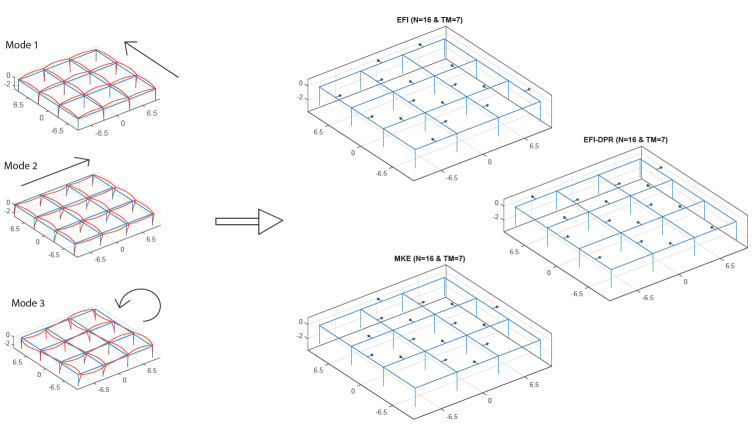
This toolkit is developed by Dr. Claude Leyder, as part of her PhD thesis. This toolkit offers a set of Optimal Sensor Placement Algorithms (Modal Kinetic Energy Method (MKE), Effective Independence method (EFI) and Information Entropy Index (IEI) Method). An enhanced IE variant is additionally included, which resolves the problem of close positioning of sensors, which forms a common issue when sensor positions are selected from a dense grid.
Cite: Leyder et al. (2018) external pageOptimal Sensor Placement Methods and Metrics – Comparison and Implementation on a Timber Frame Structurecall_made
Parametric Representation of Earthquake Excitation
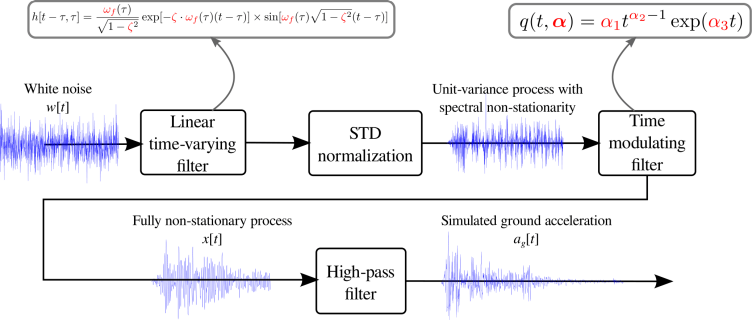
This tutorial is developed by PhD candidate Kostas Vlachas. It contains all necessary functions and subroutines for a parametric representation of synthetic earthquakes, as described in: Spiridonakos & Chatzi (2015) and initially proposed in Rezaeian & Kiureghian (2010).
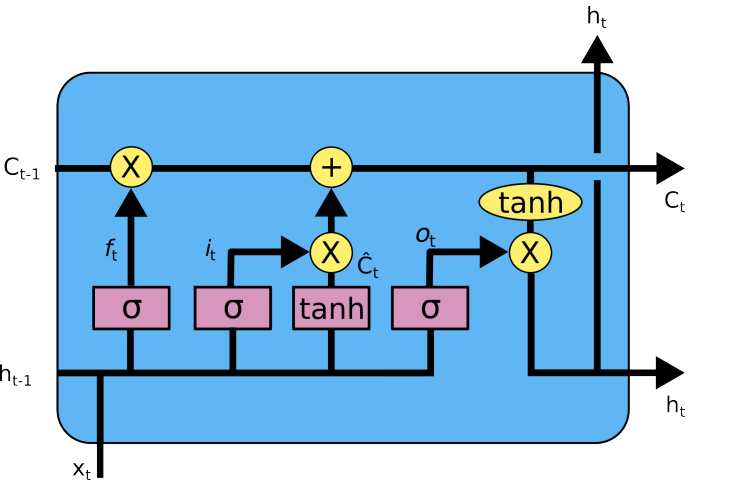
This tutorial is developed by PhD candidate Thomas Simpson, as a demonstrator on the use of LSTMs for Identification of Nonlinear Dynamic Systems with Python
The work is established as part of the European ITN network external pageDyVirtcall_made
A Benchark on SHM/VoI (COST Action TU1402)
Download Link: external pageGithub Repositorycall_made

This software serves as a benchmark for verification of SHM and Value of Information (VoI) tools.
It has been established as a benchmark of external pageCOST Action TU1402call_made.
This contribution presents a numerical benchmark for system identification under changing environmental and operational conditions. The considered system, which serves as a virtual monitored bridge, is modelled with an open access Finite Element code, which is supplemented with a Graphical User Interface (GUI). This enables extraction of modal properties and dynamic response (time-history) data for a number of predefined damage patterns and diverse operational as well as environmental scenarios. Refer to external pagethis publicationcall_made for a manual of operation of the benchmark. This is work in progress; related files will be continually updated on our GitHub repository.
Citations
We share the software we develop openly and freely but ask that you cite the related literature sources:
Konstantinos Tatsis and Eleni Chatzi (2019) A numerical Benchmark for System Identification under Operational and Environmental Variability, Proceedings of the 8th International Operational Modal Analysis Conference (IOMAC'19), May12-14 Copenhagen, external pagelinkcall_made
Educational Software

Educational Software for Statics and Mechanics
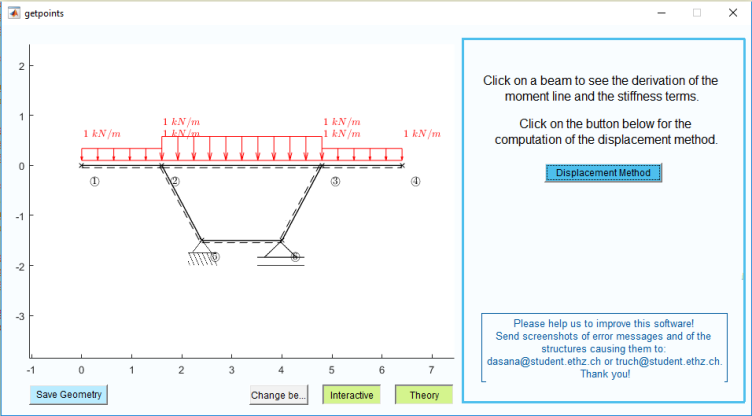
This educational software has been created in connection to the lecture “Baustatik II”.
The aim is to provide students with a useful tool for the introduction of the displacement method.
Former BSc students Ana da Silva Rodrigues and Tinet Ruch created this software with a focus on creating a dynamic software, enabling the user to define and solve arbitrary systems in an interactive mode. The Gitlab link includes useful hints and informative texts explaining the theory.
* The project is licensed under a GNU Public General License
Citations
We share the software we develop openly and freely but ask that you cite the related literature sources:
da Silva Rodrigues, A. and Ruch T. (2018), Developing educational software for statics and mechanics lectures, Bachelor thesis, ETH Zurich.
PLASTIC FRAME ANALYSIS - Downloaddownload (RAR, 3.9 MB)vertical_align_bottom
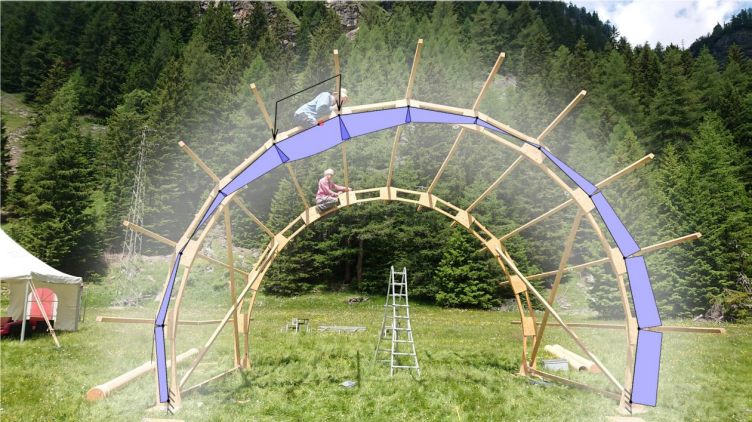
This educational software has been created in connection to the lecture “Baustatik II”.
The aim is to provide students with a useful tool for the introduction of plasticity.
The goal of this thesis was to create a program for students attending a statics course. With this software, former BSc students Timo Bundi & Davide Ferrari created a tool that computes different problems and also serves as a way to strengthen the general understanding of statics. This software specializes in plastic calculation of indeterminate systems. However, the computation of geometrical properties of a cross section, as well as the elastic calculation of indeterminate & determinate systems is also possible.
Citations
We share the software we develop openly and freely but ask that you cite the related literature sources:
Bundi, T. and Ferrari, T. (2018), Developing educational software for statics and mechanics lectures, Bachelor thesis, ETH Zurich.

